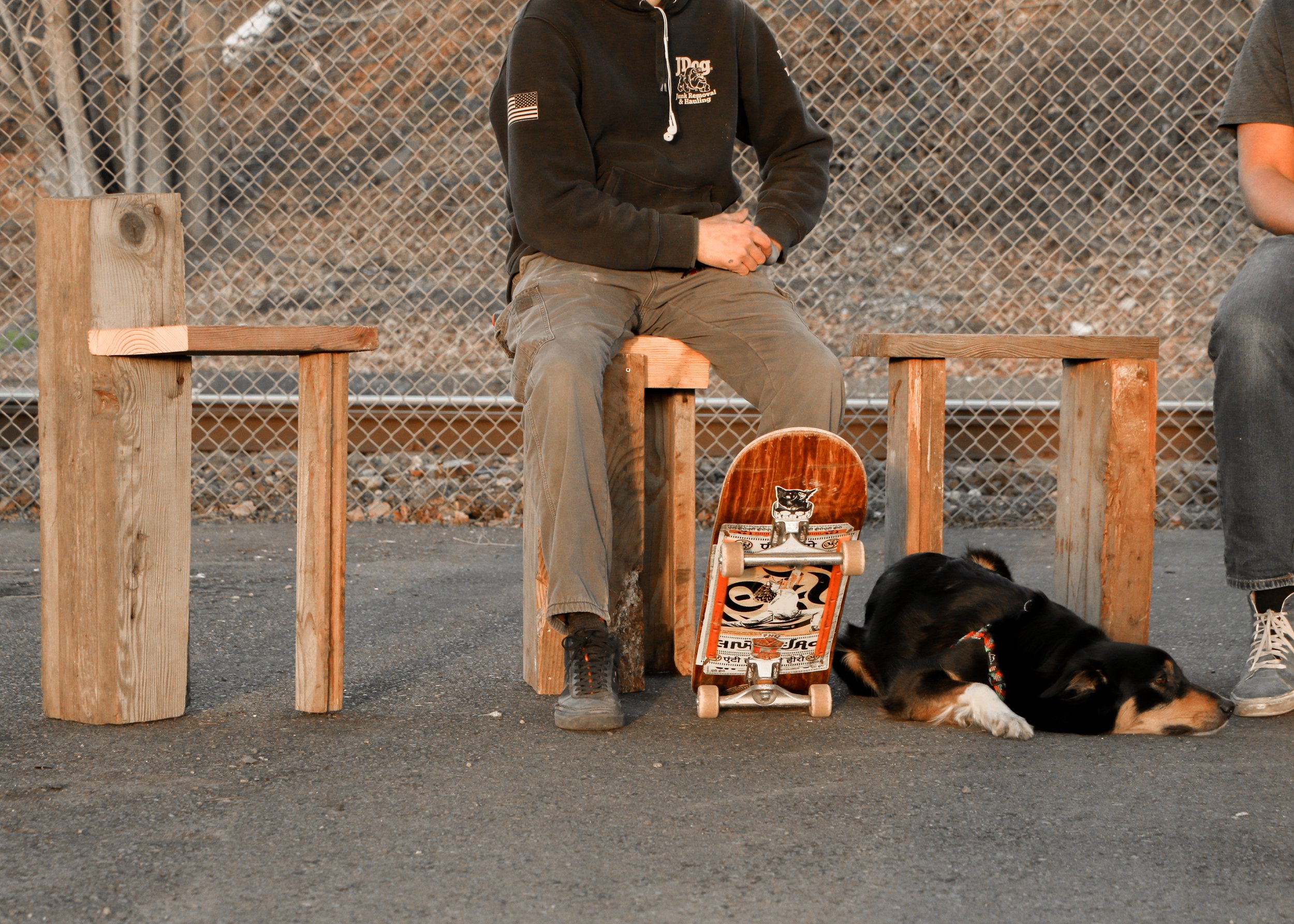
1.3.6 is a family of unique objects for sitting. Each form was constructed around an intriguing existing piece of abandoned lumber from a historic landmark granary building in Bellingham, WA.
The project consisted of 1 day of constructing on site using 3 tools to create 6 chairs that would act as functional full-scale form explorations. Each chair was an exercise in building hierarchy, tension, and balance while being constrained by materials, tools, and time. The location of the chairs was also important to the ethos of the project, located at a newly constructed DIY skatepark under a bridge. Drawing inspiration from the location, the chairs are made from the same discarded lumber that the skatepark features. The beauty of building with discarded materials from the surrounding urban environment is an art that any skater can appreciate.
The challenge of making functional objects on site from discarded material using limited tools is one I intend to continue and pursue. It is the most fulfilling combination of creativity and craft I have experienced.
The granary building has been a landmark in Bellingham since 1944.
After its remodel much of the flooring and lumber from inside the granary was dumped under a nearby bridge as waste.
I saw this discarded material as an opportunity to freely create and explore form with the aim of supporting moments of connection.
The DIY skatepark is a creative hub and acts as a meeting place for people from diverse backgrounds; however, it lacked seating for people to rest and engage with one another.
The brief was clear, create a solution that would foster connection and aesthetically blend into the environment.
As I built, people would ask “What are you making?”
“Chairs… or you could say objects for resting and connecting,” I’d reply, and then we’d chat. I’d ask what they thought about the “chairs” or to pick out a piece of material that stood out to them to incorporate into the next sculpture. A couple conversations were about their experience and what had drawn them to skate at the DIY instead of the city skatepark. Creativity and freedom were common themes from those conversations, a sentiment I resonated deeply with.
These interactions and moments of connection and input were the highlights from the project.
Project Takeaways
-
As a craft-forward project, it was an opportunity to combine my love of hands-on making and form exploration. The form of each object was directly inspired by the material it was constructed with, which was a unique method for exploration.
-
While the ability to freely create with what was discarded as waste was the original genesis, connecting with the community and receiving their input and affirmation of the goal became the soul of the project.
-
My father’s favorite proverb is “One man’s trash is another man’s treasure.“
I have always taken it to mean what is useless to some can be valuable to many. Projects that reintegrate “waste materials” into functional and beautiful objects will continue to be my greatest passion in design.
What I did
Design, Fabrication, Project Direction
Next Steps
Currently involved in advocating for funding and permitting to legitimize, protect and expand the DIY.





















